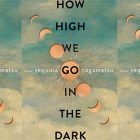Deep Valley Homecoming and Laurapalooza: Keeping Classic Children’s Literature Alive
In a ballroom in Mankato, MN one June evening, a murder mystery unfolds called “Betsy and Tacy Go Downton.” Each table is supposed to cast our votes for whodunit: a character from Maud Hart Lovelace’s charming Betsy-Tacy books, which take place at the turn of the twentieth century? Or one of the “visiting cousins” from Downton Abbey? I’m sure it’s going to be someone from Downton Abbey. Betsy and her family and friends are just too nice.
I hasten to add that these favorite characters from my childhood are not, however, bland. If you haven’t heard of them, it’s your loss, though not unusual: the Betsy-Tacy Society’s slogan is “I thought I was the only one” because so many fans grew up thinking these books were our own personal discovery. And now, miraculously, a whole slew of avid fans have turned out for this dinner and play—at least 50 of us— that kick off Deep Valley Homecoming, a celebration of Lovelace’s work.
I’m spending my summer at smaller-scale children’s-literature-related versions of Comic-Con and Star Trek Conventions—DVH, and, a few weeks later, Laurapalooza, focusing on the work of Laura Ingalls Wilder. I hang out with women in Merry Widow hats, so wide they used to get caught in train doors, and in sunbonnets like the ones that Laura hated. These conferences strip away academic jargon and ironic distance in favor of an immersive experience that imitates the all-consuming absorption in books of many of our childhoods.
DVH features a demonstration and lesson of steps from the Scottische, a dance mentioned in the series, and a performance of songs that Betsy and her friends sang around the piano: “My Wild Irish Rose,” “Everybody Works but Father,” songs about Lucille and the narrator’s Oldsmobile, Josephine and the narrator’s Flying Machine. There are horse-drawn trolley rides, presentations about Lovelace’s books and Mankato history, and a Victorian tea. I sit with a young woman named Grace wearing her mother’s Gunne Sax prom gown, those fussy Victorian formals that were popular in the 1980s. Next to her is Susan Hynes, Lady Violet from the play and a skilled hatmaker, wearing a vintage hat and pink satin and lace dress.
In Brookings, SD, Laurapalooza draws 165 participants, mostly white and mostly women, but from every political persuasion, walk of life, and mode of dress, from period costumes to casual wear to business attire: accountants, nurses, homeschoolers, teachers, people who adore the TV show, people who detest the TV show, TV producers, researchers, a meteorologist, a professor of pediatrics, historians, woodworkers, volunteers at living history farms, people—like me—who think it’s important to examine historical representations of race and others who wish we’d stop talking about it.
At these gatherings, more like family reunions than academic meetings, participants gossip about favorite characters with the same intensity as we might discuss absent relatives. Was Tacy a lesbian? Should Betsy have ended up with Tony instead of Joe? Why was Mrs. Brewster so mean to Laura? Why was Wilder so merciless in her portrayal of her real-life sister-in-law, immortalized in her series as “Lazy Lousy Lizy Jane?”
Laurapalooza’s presentations are interdisciplinary, grounded in research but still accessible, about weather in the books, the medical cause of Mary’s blindness, the style of education in Wilder’s time, and, in a keynote address by Pamela Smith Hill, the significance of Wilder’s newly-published memoir, Pioneer Girl. A UK woman describes her puzzlement as a child when she read about pioneers eating biscuits and gravy: why did Americans put gravy on their cookies? A presenter from Japan talks about the influence of Wilder on anime, and a Japanese translator tells us about the conundrum of how to translate words like “Ma” and “Pa.”
Both DVH and Laurapalooza include tours of childhood homes of the authors. I’ve visited them before, but it’s a whole different experience accompanied by other fans, witnessing how some of their notions become reconfigured just as mine were. As a child in relatively flat Kansas, when I read about Betsy and Tacy eating their dinners on a hilltop bench, I pictured the only hill I knew, the turnpike that ran next to my house. I pictured Betsy and Tacy happily chowing down while traffic whizzed by at 80 mph. Now, of course, I can envision the actual serene natural hill that Lovelace had in mind.
A tour of De Smet, SD includes the surveyors’ home from By the Shores of Silver Lake, a place that seemed like a mansion to Laura but is strikingly tiny by today’s standards. In the Ingalls family home, a piano teacher is allowed to cross the ropes to play the pump organ for an impromptu singalong. In such moments, we’re reminded that good books are far from static objects, but can take on lives of their own for years to come.




